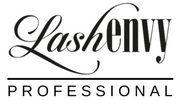Boss Adhesive Safety Data Sheet
SECTION 1 – CHEMICAL PRODUCT AND COMPANY ID
1.1 ProductName :BOSS Adhesive
1.2 First Issue :31 March 2021
1.3 Company Identification :Lash Envy Professional
6a Haughton Road Oakleigh VIC 3166 AUSTRALIA
SECTION 2 – INGREDIENTS
|
Ethyl Cyanoacrylate |
|
Polymethyl Methacrylate |
|
Carbon Black |
SECTION 3 – HAZARDS IDENTIFICATION
EMERGENCY OVERVIEW
Vapor is irritating to eyes, skin and mucous membranes and respiratory tract.
POTENTIAL HEALTH EFFECTS
May cause desensitisation by inhalation, narcotic effects, headache, dizziness, vomiting. Skin may become dry. Eyes: Irritation
POTENTIAL ENVIROMENTAL EFFECTS:
Not available.
SIGNS AND SYMPTOMS OF EXPOSURE:
Vapour is irritating to eyes and mucous membranes above TLV. Prolonged and repeated over exposure to vapours may cause symptoms of non-allergic asthma in sensitive individuals.
EXISTING CONDITIONS AGGRAVATED BY EXPOSURE:
None Known.
SECTION 4 – FIRST AID MEASURES
Inhalation: Move to fresh air. If not breathing, give artificial respiration. If breathing is difficult, give oxygen. If symptoms develop and persist, seek medical attention.
Skin contact: Do not pull bonded skin. Soak in warm soapy water. Gently peel apart using a blunt instrument. If skin is burned due to the rapid generation of heat by a large drop, seek medical attention. If lips are bonded, apply warm water to the lips and encourage wetting and pressure from saliva in mouth. Peel lips apart. Do not pull lips apart with force.
Eye contact: Immediately flush with plenty of water for at least 15 minutes. Seek medical attention. If eyelids are bonded closed, release eyelashes with warm water by covering with a wet pad. Do not force eyes open. Cyanoacrylate will bond to eye protein and will cause a lachrymatory effect which will help to debunk the adhesive. Keep eye covered until debunking is complete, usually within 1-3days. Medical attention should be sought in cases of solid particles of polymerised cyanoacrylate trapped behind the eyelid caused abrasive damage.
Ingestion: Ensure breathing passages are not blocked. The product will polymerise rapidly and bond to the mouth making it almost impossible to swallow. Saliva willl separate any solidified product in several hours. Prevent the patient from swallowing any separated mass.
Notes to physician: Surgery is not necessary to separate accidentally bonded tissues. Experience has shown that bonded tissues are best treated by passive, non-surgical first aid. If rapid curing has caused thermal burns they should be treated symptomatically after adhesive is removed.
SECTION 5 – FIRE FIGHTING MEASURE
Flash Point: above 115°c
Method: Cleveland open cup. (Recommended)
Extinguishing Agents: Carbon dioxide, foam, dry chemical
Special Firefighting Procedures: Not Available
Hazardous Products Formed by fire or thermal decomposition: Irritating organic fragments
Unusual fire or explosion hazards: None
SECTION 6 – ACCIDENTAL RELEASE MEASURES
Personal precautionary measures: Refer to section 8 –personal protection.
For large spills, evacuate the area and ensure good ventilation.
Environmental protection measures: Polymerise slowly before disposal–see section.
Procedure for cleaning/absorption: For large spills wear self-contained breathing. Do not use cloths for mopping up. Polymerise slowly with water and scrape up.
SECTION 7 – HANDLING AND STORAGE
7.1 HANDLING:
Wear proper protective equipment, and avoid contact with skin or eyes. Use only in well ventilated areas.
Use exhaust ventilation to keep air concentration below exposure limit. Keep container tightly closed when not in use.
7.2 STORAGE:
Keep away from possible source of ignition. Store in cool, dry and well ventilated location. Keep container tightly closed.
Keep away from combustible materials, and steam pipe or sunlight. Keep away from oxidizing materials.
7.3 OTHER PRECAUTIONS:
Wash hands, face and gargle after work.
Practice good personal hygiene after using this material, especially before eating, drinking, smoking or using the restroom.
Keep out of reach of children.
SECTION 8 – EXPOSURE CONTROLS / PERSONAL PROTECTION
Engineering controls: Use positive down-draft exhaust ventilation if general ventilation is insufficient to maintain vapor concentration below established exposure.
Respiratory protection: Ensure adequate ventilation
Eye protection: Wear protective
SECTION 9 – PHYSICAL AND CHEMICAL PROPERTIES
Appearance : BlackLiquid
Odor : Odorless,irritating
BoilingPoint : Above 190°c (374.F)
MeltingPoint : N/A
Specific Gravity(H2O=1) : 0.9-1.1
Vapor Pressure(at 25°c) : 1Pa
Vapour Density (Air=1) : 4.9
Solubility in Water :Insoluble (Polymerised by water).
Additional information :Soluble in acetone
SECTION 10 – STABILITY AND REACTIVITY
10.1 Conditions to avoid: High humidity, high temperature or direct sunlight
Stability : Stable (Cool and dry area)
Material to avoid: Polymerised by contact with water, alcohols. Hazardous Decomposition or by Products: CO2, Oxides, Nitrogen and unknown Hydrocarbons.
SECTION 11 – TOXICOLOGICAL INFOMRATION
Toxicity: Skin contact may cause burns, bond skin rapidly and strong skin and eye irritation.
Possible Routes of Entry: Inhalation (Yes), Skin (Yes), Ingestion (Yes).
SECTION 12 – ECOLOGICAL INFORMATION
No date Available.
SECTION 13 – DISPOSAL CONSIDERATIONS
Product: Polymerize adhesive by adding slowly to water (10:1, Adhesive:Water). Dispose of solid residue according to national and local regulations.
SECTION 14 – TRANSPORATION INFORMATION
DOT (49 CFR 172) *Domestic ground transport
Proper shipping name:
Unrestricted (Not more than 450 litres.) Combustible liquids n.o.s.(Cyanoacrylate ester) (More than 450 litres)
Hazard class or division:
Unrestricted (Not more than 450 litres.)
Combustible liquids. (More than 450 litres)
Identification number: None (Not more than 450 litres.) NA1993 (More than 450 litres)
Marine pollutant: None.
IATA
SECTION 15 – REGULATORY INFORMATION
CA Proportion 65: No California Proposition 65 chemicals are known to be present.
SECTION 16 – OTHER INFORMATION
Estimated NFPA(R) Code:
HealthHazard 1
FireHazard 1
Reactivity Hazard 1
Specific Hazard: Does notapply
Estimated HMIS(R) Code:
Health Hazard 1
Flammability Hazard 1
NFPA is a registered trademark of the National Fire Protection Assn. HMIS is a registered trademark of the National Paint and Coating Assn.
This information is furnished without warranty, express or implied, except that it is accurate to the best knowledge of Lash Envy Professional. It relates only to the specific material designated herein, and does not relate to use in combination with any other material or process. Lash Envy Professional assume no responsibility for use or reliance upon this information.
